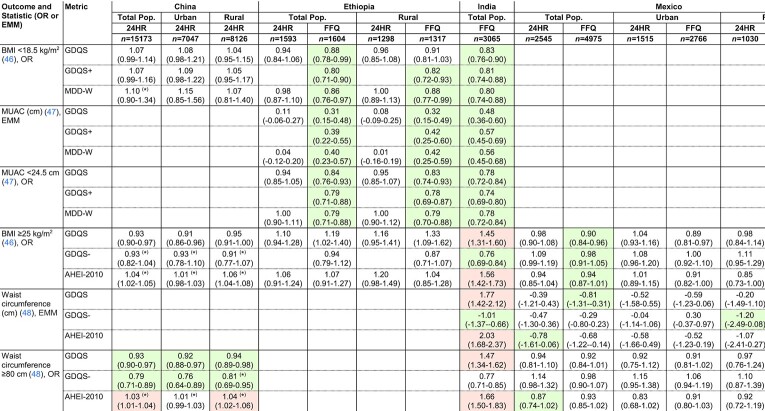TABLE 6.
Covariate-adjusted associations between metrics and anthropometric outcomes among NP NL women of reproductive age in the total population or within the urban or rural stratum of cross-sectional datasets1
Values indicate ORs or EMMs (95% CIs) per 1-SD increase in metrics. ORs and EMMs are estimated from covariate-adjusted regression models of associations between metrics (expressed in quintiles) and continuous outcomes, or dichotomous outcomes defined according to clinically relevant cutoffs. See footnote to Figure 1 for adjustment covariates. Color indicates statistically significant linear trend across metric quintiles (P < 0.05) (green, protective; red, deleterious). *P < 0.05, statistically significant Wald test comparing trends between the GDQS and other metrics. Sample size corresponds to the number of participants with dietary data [for some outcomes, available sample size was smaller; refer to (25–33) for more details]. AHEI-2010, Alternative Healthy Eating Index – 2010; EMM, Estimated Marginal Mean; GDQS, Global Diet Quality Score; GDQS+, GDQS Positive Submetric; GDQS-, GDQS Negative Submetric; MDD-W, Minimum Dietary Diversity – Women; MUAC, mid–upper arm circumference; MVP, Millennium Villages Project; 24HR, 24-hour recall.

